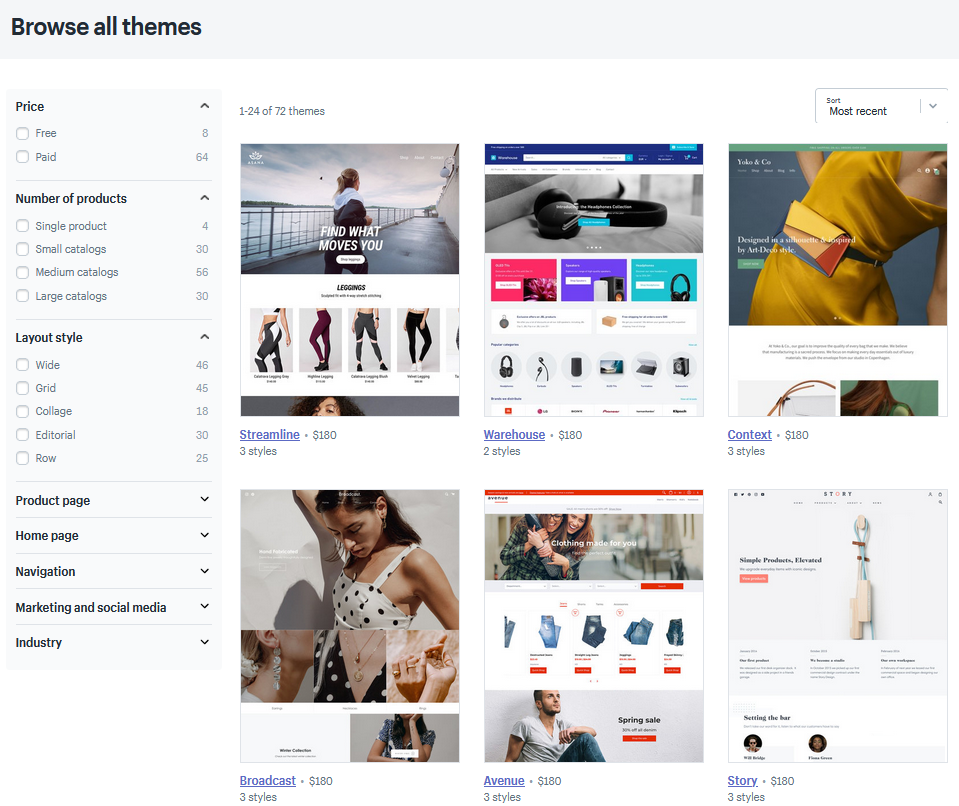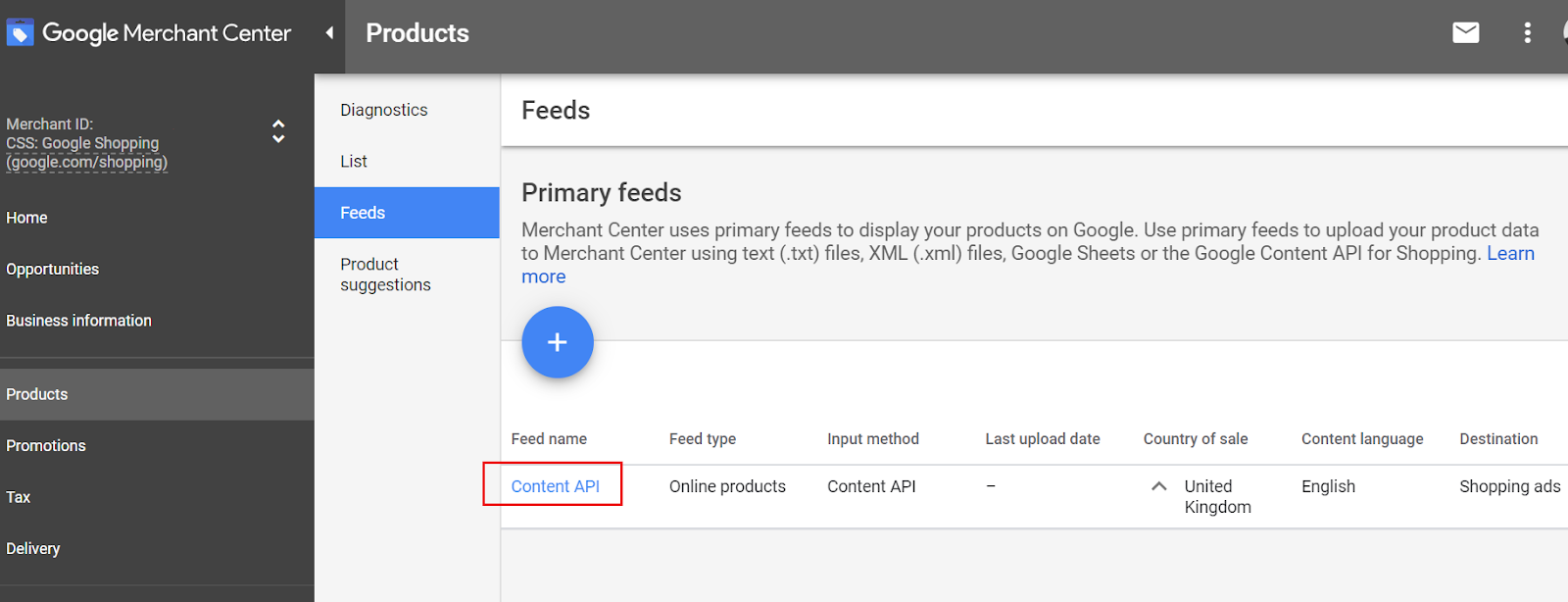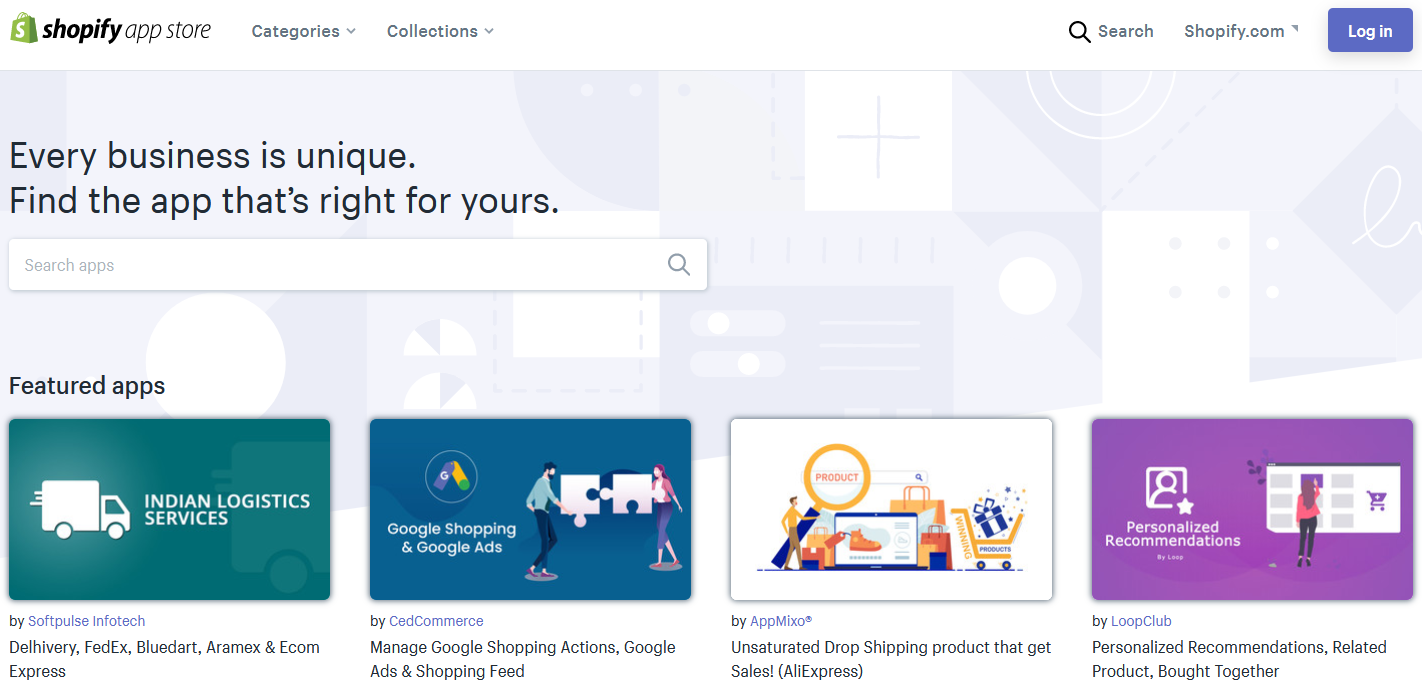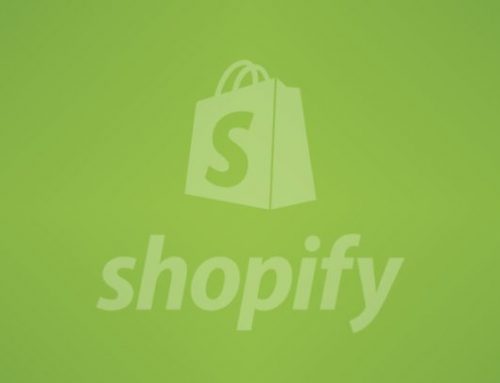Business Advantages of Moving to Shopify
There are a variety of reasons why so many retailers across the world are moving to Shopify. Business advantages are infinite, but the most important reasons our clients have switched to Shopify are:
- Full and utter control of their e-commerce website.
- The freedom to control, maintain and build their own product without the need to rely on costly developers.
- Clear of lengthy and costly contractual relations.
- Scalable e-commerce website.
- 99.98 Uptime of server.
- Winning Shopify service 24/7.
- Unlimited width of the unit.
- Multi-channel choices for e-commerce.
Migrating platforms is a tricky operation, no matter what platform you’re going to and from. This is important for any retailer to reduce the risk of losing rankings, traffic and sales revenues. We’ve put together a concise list of problems that you’ll face and need to resolve before embarking on some sort of Shopify migration project.
Product Feed Data
The biggest obstacle you will encounter as you migrate to Shopify is to add data from your existing platform to your store. Shopify is delivering an easy-to-use .csv format, straight forward right? Sure, importing data can be done fairly quickly if you know what you’re doing and have the data readily accessible, but how many retailers do it?
If you are an incredibly well organized seller and have maintained an itemized list of all the items you have on your current platform, including SKU’s, product title, product summary, associated photos and GTIN’s, etc., otherwise you are a winner and your import process will be simple. If you don’t, because we also have to come across a seller that does this, so it won’t.
So, the first move is to get as much details out of your current store as you can. The amount of data you will obtain from your current store can be calculated by the following factors:
- What platform you’re actually using.
- What amount of admin control you have in your store.
- What are the policies and values of the current suppliers?
When you’ve used WordPress previously and exported all the data previously then you’ll know how simple it is. Ecommerce sites aren’t any different, it just depends on whether or not the developers will let you. Asking for complete data to be exported from your website is typically a cause for your manufacturer or organization to leave and is generally highly hesitant to supply your data. They’re trying to make it as hard as possible to get away from them. What on earth should they? This is your data!
Tip: See what access you actually have to your new CMS. Will you find some sort of software that helps you to export your data. If you’re unfortunate enough to be in this position, don’t panic, it’s not all gone. We will support you. We also built a quick, unique method for transferring all your product data from your current store, including images, customers and previous order data.
Shopify Developer Choice
Choosing the best developer or provider would be crucial to the success of your migration. The cheapest choice is definitely never the right alternative, but we would prefer one who has extensive experience with the job that you are asking them to perform. Ask your developer about their method of site migration. They should reduce the chance of losing slots, traffic and conversions. This is important for Shopify SEO and for retaining the reputation that your current store has built up in search engines. This is a complicated operation, so you need to be in safe hands. Here are some of the key questions that you can ask the developer before you decide who to use:
- Which kind of experience do you have in building the Shopify platform?
- Which kind of background do you have in my sector?
- Have you been approved as a Shopify Partner?
- Have you switched other websites like mine to Shopify before?
- If so, what are the results?
- What’s your method of network migration? Please set each point.
- How will 301 redirects from old URLs to new URLs be handled?
- Okay, where are you based?
- How long did you work for Shopify?
- Could you give a customized service?
- Which kind of post launch help do you offer?
- Can you provide email and phone support?
- Which hours do you provide your phone support?
- Can you create Shopify themes, or do you only customize other peoples?
- Are you developing and integrating with big EPOS, Finance & Accounting software?
- Could you have support for Shopify API integration?
- Could you create Shopify apps if additional functionality is needed?
If your future supplier will respond positively to any of the above. Then you find your supplier.
Shopify Theme Choice
The theme that you or your developers want to build in your store would be critical to the ability to compete in search engines.
Technical SEO problems with Shopify are well known and you need to select a theme like AAP ® Theme that has been developed for search engines and not just for aesthetics, apps and functionality. Here are some basic questions that you can ask your Shopify developers before you settle on the theme:
- Which theme are you going to use?
- Who has been creating your theme?
- Who designed and created your theme?
- What sort of Shopify SEO professionals are they?
- How does it cope with metadata & content replication of the drug filter page?
- How did they work with the canonicals for your particular products?
- How well were the organizational systems structured to prevent repetition of disputes and penalties?
- How are the pictures optimized?
- Does Structured Data have a common theme?
- Does Free Graph Metadata contain the theme?
- What’s the page load pace of the theme you’re using?
- Are you trying to refine the feed of the company until you migrate?
- Which kind of experience do they have in Shopify?
If your Shopify web designer doesn’t know what you’re talking about or can’t react favorably to any of the above, maybe you’re talking to the wrong Shopify Partner.
Additional Functionality Requirements
Connected to the theme segment above, you may need to better understand what additional features may or may not be needed. Your theme comes with basic features. You’ll need to consider the functionality of your current site that you can’t do without, and then equate it to the functionality of your new theme creation. Any apps that you don’t have can cost you extra.
Google Shopping & Merchant Center
Whether you’re actually advertising on the Google Comparison Shopping Platform, you’ll need to learn if your new site is aligned with the Google Merchant Center, because this is what your Google Advertising page is all about. Is your Merchant Center receiving your product data either manually or via feed? You can test this by logging in to your Merchant Center dashboard and pressing’ Go to Diagnostics’ and then’ Feeds.’ Anything like that will feel like this:</div?
This stream is actually using Shopify’s API service, so if the data is imported in a particular way, it will be said here. Many widely used ecommerce sites link the Merchant Center to an XML file that is a URL. Shopify uses its own Content API and offers a free Google Shopping feature. You will need to customize this app and optimize your product feed either before uploading your product feed to Store with the appropriate Google Shopping fields or after uploading your feed to Shopify with the Google Shopping App. Any way, you’ll need access to your Merchant Center to integrate with Shopify and delete the old connection so that it doesn’t clash and impede paid search results.
Back-office Integrations
Does the new store combine with some back office programs like stock storage, EPOS services, payroll, partner or accounting packages.
Either way, you’ll need to learn which one you’re merging with to find out how the current theme can be integrated for the features you need. There are over 1000 applications in the Shopify app store to manage 3rd party device integrations, so if there is more, you’ll need to ask if the developer is willing to deal with Shopify API integrations. We’re doing Integrity Search here, and our theme is integration ready, but others may not be so you’ll need to search.
Ongoing Shopify Support
When the migration is complete, you’ll need to talk about who and how the new Shopify should be supported. The key apps and services of Shopify are provided 24/7 via phone, email and chat, free of charge. However, your theme will not be supported by Shopify; that will be the responsibility of your Shopify developers. If you’ve ordered a theme from a theme shop, you’ll usually note that most come with a few months of free service, but be careful, most of the themes in the shop are designed by designers and developers outside the UK and don’t provide phone help, so do your homework before choosing a theme supplier that will service you during working hours here in the UK.
Shopify Pricing & Plans
Shopify’s cloud-based eCommerce platform has four big pricing styles. They have 5th position in Shopify Lite, but this literally helps you to sell through Facebook and is not covered in this guide.
Set up your own’ Shopify Payments ‘ program and you don’t need to go through any extensive Internet Retailer & Online Payment Service processes. You can exchange online as long as you have a valid bank account and card payment information. The’ entry thresholds’ are incredibly small relative to many more conventional online trading routes.
However, you can select other third party payment services and offer cheaper transaction rates, but you’ll note that you’re still meeting additional’ per sale ‘ scaling costs of 2.0 percent, 1.0 and 0.5 percent, respectively, if you’re on the Standard, Shopify or Advanced Shopify Pricing plans, but it’s actually a lot more cost-effective and move to the Shopify Payments platform. Yeah, you spend more per purchase, but you will quickly find that the market opportunities listed above will offset your costs. You’ll own your own eCommerce shop, you’ll be able to self-manage, no recurring hosting or network charges, award winning 24/7 service and 99.98 percent uptime and no server management charges. The Shopify pricing strategies are as follows.
Basic Shopify @ $29 per month
Ideal for start-up e-commerce firms. With the exception of Gift Cards, Technical Guides, Advanced Report Maker and Third-Party Measured Delivery, you get the vast majority of options and applications that allow you to view measured prices for your own account or third-party software at checkout. However, processing costs are marginally higher with each processing costing 2.2 percent + 20p per transaction.
Shopify @ $79 per month –
Ideal for existing e-commerce firms. You get 99 percent of the apps and functionality except the Advanced Report Maker, but if you’re already using Google Analytics, it won’t be a concern. Transaction costs are marginally smaller per contract, paying just 1.9 per cent + 20 per contract.
Advanced Shopify @ $299 per month –
Suitable for existing e-commerce firms. You’re getting 100 percent of the apps and functionality. Payment costs are just marginally smaller than transactions paying 1.6 percent + 20p per payment. The price arrangement is intended only for stores with an unusually high amount of monthly sales, as the payments are only slightly cheaper than the $79 a month bundle above.
Shopify Plus @ $2000 per month –
Suitable for major e-commerce firms. You’ll get 100 percent of the apps and services with an extra level of support, a few server side scripts that will help you to configure your checkout a little more, and you’ll get Shopify’s latest Business Automation platform named Flow that will deliver a lot more customized shopping experience. Transaction rates are the same for transactions costing 1.6 percent + 20p per transaction.
All and all, migration to Shopify will be an incredibly easy process if you choose the correct Shopify Partner. When done, you can reap the tremendous market and financial advantages Shopify has to offer.
If you would like your Shopify migration handled by Shopify SEO professionals to secure your reviews, traffic and sales, then our award-winning digital marketing firm is waiting to hear from you.
You Might Be Interested In – Shopify Migration Expert






